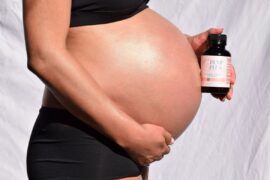The new guidelines recommend women do not birth on their backs, but rather change positions and try standing, leaning, or on their knees, which Ms Smith says was actually common until the 1950s. The other new guideline is to coach labouring mothers to breathe through their contractions and not force themselves into pushing – letting the body and gravity help move the baby along. Pulling the baby by the shoulders is also being discouraged as of course it can put more pressure on the mother’s perineum, instead they’re being advised to support the weight of the baby.
Two midwives are present at births to ensure the programme guidelines are being met. Women who do still experience tearing go on to be scanned and assessed for possible ongoing problems.
So far the programme is having fantastic results over there. So successful that the results have been published in the European Journal Of Obstetrics & Gynaecology And Reproductive Biology, and there are plans to take it nationally.
Hannah Schenker is a freelance writer, editor and regular contributor to The Natural Parent Magazine. She lives with a touch of magic in Golden Bay, New Zealand.











Love the idea of supporting the baby’s weight, and of course allowing mother to do whatever is comfortable. I have had four babies, all with midwives attending, who did not force me to push, my body pushed all on its own when I didn’t even want to, and I had third degree tear with my first baby. My second baby I had a second degree tear, and then some minor grazes on the third, and then nothing on the fourth. My body seems to be recovering well, so I think it’s possible to have more births without damage. I also encourage women to physically support themselves (their vagina) during birth – I did this with my second baby (with my own hand), which really helped.
Not to nitpick, but if you’re going to write about science you should provide an actual citation to the study which you are referring so that people can read it for themselves (in many cases they may not be available for free, although in this case it actually is, but if someone is interested they could purchase it). Linking to a Daily Mail article in the hotlink for “study” is not helpful, either link to the study itself or provide the proper citation for finding the study (at least the DOI).
http://www.ejog.org/article/S0301-2115(16)30184-1/fulltext
Good spotting! An incorrect link had been inserted – amended now.